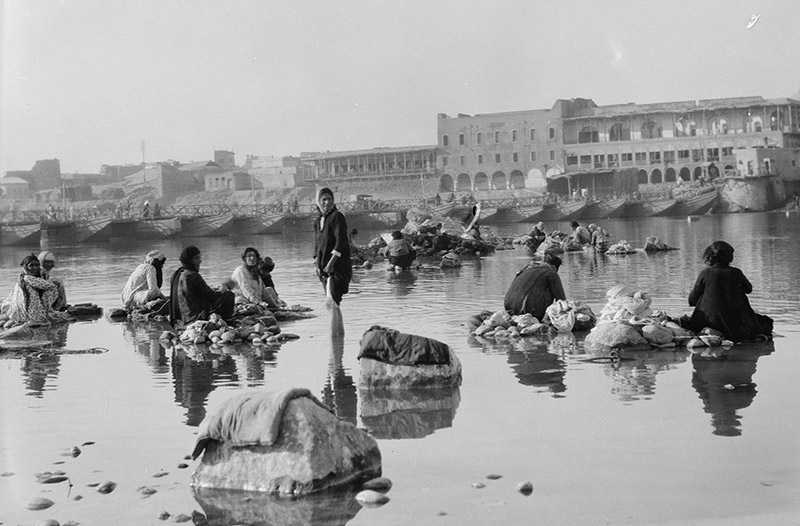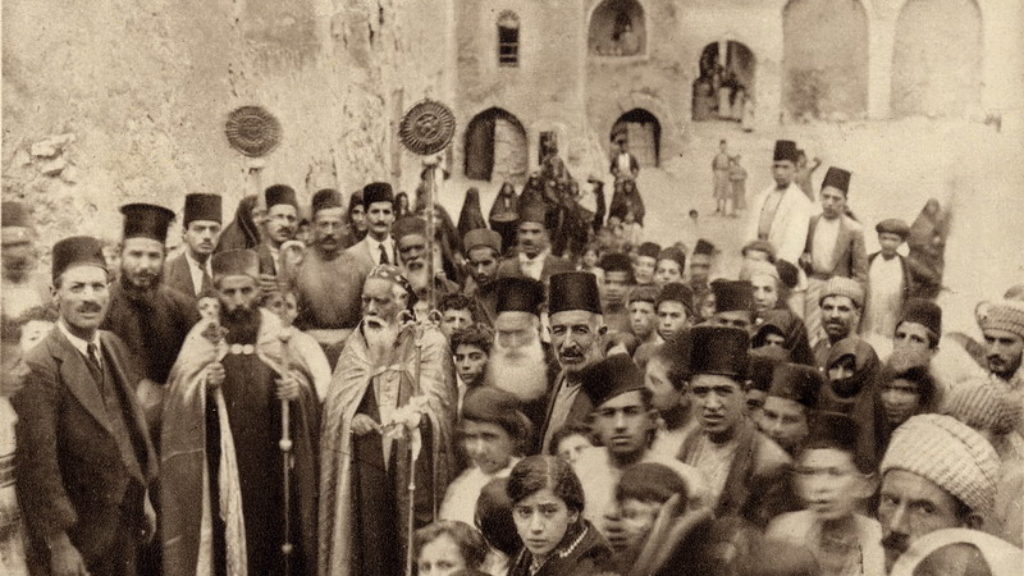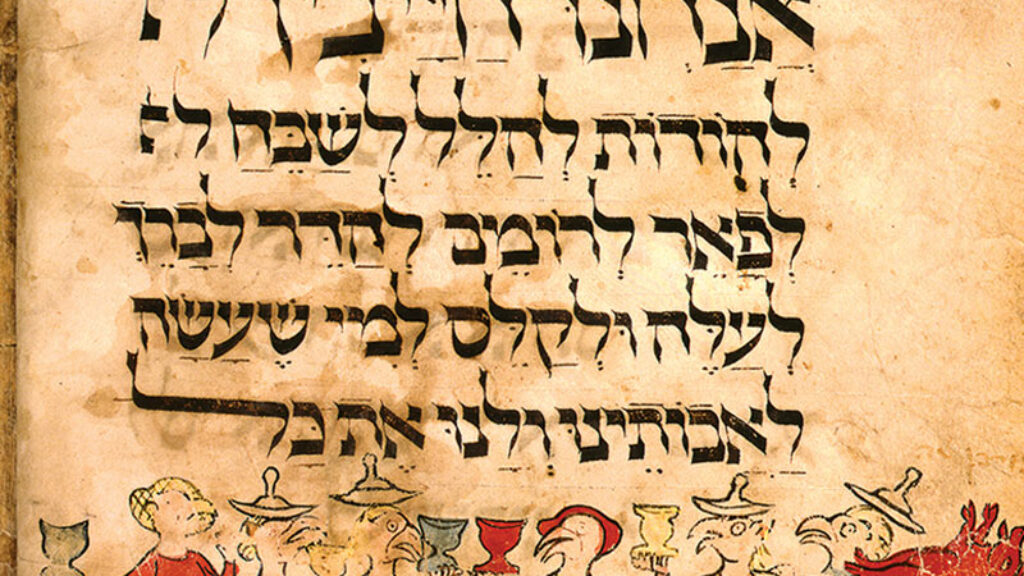Persian Daughters of Israel
In the weeks leading up to my wedding, I, like every Orthodox bride, spent an awful lot of time thinking about my period. Although I had studied the Jewish laws of menstrual purity (niddah) in great depth as part of my ordination studies at Yeshivat Maharat, it’s different when you are about to live them. I took “kallah classes” with an older friend to make sure I learned all of the relevant, practical details like “set an alarm on your phone so you do the internal check on time.” The Talmud left that one out.
I also spoke with friends. “You should really consider getting an IUD—if you’re allowed to get an IUD.” This suggestion came up during a phone conversation with a Muslim friend of Persian descent who got married the year before me and had some strong suggestions about menstrual impurities. Mainly: avoid them. Fewer periods mean less menstrual impurity, less hassle, and less marital distance.
My friend and I had started comparing our religions’ menstrual laws years earlier. I had been to the shuk in Jerusalem’s Old City looking for a tile with a quote from the Quran for her. The Arab shopkeeper asked, to my initial disbelief and then dismay, if I was “blood down.” That’s when I learned that menstruants in Islam are not permitted to handle holy texts, just as some Jewish women have the (halakhically questionable) practice not to touch a Torah scroll while they are menstruating. Over years of friendship, the compare-and-contrast conversations with my friend have continued. Do menstruants participate in your fast days? How do you ritually wash or immerse yourself afterward? Can you pray? Does everybody know?
Shai Secunda’s fascinating new book, The Talmud’s Red Fence, argues that interfaith conversations like these have been going on since late antiquity. In Sasanian Persia, during the era of the Babylonian Talmud, Secunda shows, Jews often compared their menstrual practices with those of their neighbors. Such comparisons and conversations may have even exerted lasting influence on the laws of niddah.

This is an exciting project because it opens up the cultural context of the Babylonian Talmud, and context matters a lot when it comes to purity laws. Niddah is among the hardest of Jewish rituals to discuss with outsiders: it can sound outdated, misogynistic, and extreme. When I teach soon-to-be-marrieds about these laws, I try to pass along my pride that God’s holy commands stretch to even the most private and intimate spaces in our lives; nothing is too messy for Jewish law, and we should not be embarrassed. That would be an easier sell if most of us didn’t have a voice in our heads that says, “This is even weirder and harder than waving palm fronds on Sukkot.” What we might call the goyish gaze pervades our ritual consciousness. But now imagine a world in which the goyish gaze was altogether different, say the world of the Babylonian Talmud.
Secunda has described his teacher, the late Yaakov Elman, to whom The Talmud’s Red Fence is dedicated, as a “tireless evangelist” for the idea that scholars of the Talmud must study the Babylonian Talmud’s Sasanian Persian context. Irano-Talmudica, as the subfield has come to be known, needed such an evangelist because, as Secunda writes in his preface:
For years, scholars have treated Babylonian Jewry and its Talmud . . . as if they were somehow not integrated into the hot, flat, and crowded place that was Sasanian Babylonia. Indeed, most critical Talmudic research reads the text as if it had been composed by pale yeshiva students swaying in the corners of dark study halls. . . . If the Talmudic sages could be imagined as influenced by another civilization, it was the Graeco-Roman world, which flourished in Roman provinces to the West of Babylonia.
The previous scholarly book-length treatment of niddah is Charlotte Fonrobert’s Menstrual Purity: Rabbinic and Christian Reconstructions of Biblical Gender,published in 2000, which looks at niddah in Greco-Roman and early Christian contexts. Fonrobert called these contexts “the parameters of the historical and cultural context for the rabbinic discussions on menstruation.” Secunda disagrees, since the Babylonian Talmud was not composed in Rome but rather in that “hot, flat, and crowded place that was Sasanian Babylonia.”
The laws of niddah as practiced today emerged from verses in Leviticus and proceeded through a twisty path of midrash, Talmud, and medieval interpretation. Can some of those twists be accounted for by the fact that they initially happened in Persia? In his introduction, Secunda subtly lowers the reader’s expectations: “whether or not the Sasanian context of the Talmudic discourse affected the evolution of this area of Jewish law in some measurable way, it is still worth trying to reconstruct how these practices were once experienced by late antique Babylonian Jews, who lived alongside other peoples for whom menstrual impurity was a significant facet of religious life.” In other words, even if we cannot learn anything about the development of the laws from this study, we will certainly discover some fascinating history.
And we do. In one of the most eye-opening sections of the work, Secunda guides his readers through the different menstrual practices of various populations in the late antique Sasanian Empire. He introduces the readers to Mandaean, Zoroastrian, and early Christian texts that compare their impurity observances with those of their neighbors. His primary (and most amusing) prooftext is from the Mandaean text Ginza Rabba (the “Great Treasury”). About Zoroastrians, the Ginza Rabba says, “they take the garments of the menstruating women and wear them and say, ‘we did not become polluted.’ And they do not know their own folly.” About Jews: “And from the circumcised, idle Jews, all the nations and gates of darkness departed. They make themselves filthy and impure by their own menstruation. One who performs their works will not attain the House of Life.” About Syriac Christians: “They . . . sleep with a woman while she is in her menstruation and call that ‘the hope of the house of the godhead of Jesus Mšiha our Lord.’”
Secunda sets texts like the one in Ginza Rabba next to talmudic passages in which rabbis compare Jewish menstrual practices to those of non-Jews. In one, we find Rav Ashi suggesting that the Persians learned their menstrual laws from the matriarch Rachel because the Persian word for menstrual impurity, dastan (which the Talmud Aramaicizes as dashtana), supposedly derives from the excuse she gave her father Laban for not rising, “ki derekh nashim li” (“for the way of woman is upon me” Gen. 31:35). An ordinary reader of the Talmud will read this as typical talmudic wordplay, but Secunda detects a game of playful cultural one-upmanship.
In another passage, in the Babylonian Talmud, we see Rava championing his ability to decipher the provenance of different bloodstains before the Sasanian queen mother, Ifra Hormiz. Secunda notes, “In this fantasy, even the most powerful Zoroastrian woman in the land realizes that her religious authorities have not developed the sufficient expertise for ruling on bloodstains, so she is willing to submit to a rabbi’s technical prowess.”
Can such contextualization also shed light on the development of Jewish law? Secunda turns first to the question of the segregation of menstruants. Today, practitioners of the laws of niddah know that this is a complex subject: separate beds, same bedroom, no peeking. The couple can eat together, but she cannot pour him wine, and he cannot eat her leftovers. Not separate, but certainly not together either.
Secunda weaves a story of the development of menstrual separations after the destruction of the Temple, when purity practices were of diminishing relevance. He shows how in Palestine, there was continued concern that the menstruant did not touch vessels and liquids. In Babylonia, on the other hand, the Rabbis chose to “more thoroughly reconsider the place of menstruants in the home,” perhaps because their Zoroastrian neighbors sent menstruants off to a dastanistan, “a secluded place for menstruous women.” Secunda points out that there are talmudic voices in favor of increased stringency, such as Rava, who states that a blessing should come upon a person who chaperones a married couple while the wife is menstruating. However, “when menstrual segregation came to be associated with non-Jewish and non-rabbinic practice, this led to a strong and rapid reversal in Talmudic discourse, so that menstrual segregation was deemed illegitimate.” The rabbinic desire to protect Jewish practice from becoming too similar to surrounding cultures is quite familiar, but to a modern reader, it is surprising to find it playing out in the laws of niddah.
On the other hand, Secunda also humbly points to instances where Sasanian influence cannot account for legal changes found in the Babylonian Talmud. Zoroastrian law permits husbands to divorce their wives unilaterally if they lie about their periods. The Mishnah (of Greco-Roman Palestine) codifies a similar rule, permitting husbands to divorce their wives without having to pay up their ketuba if the wife “has intercourse with him as a menstruant” (Mishnah Ketubot 7:6). Surprisingly, then, it is Shmuel, a Babylonian sage, who is credited with moving the legal presumption toward trust in women to tell the truth about their own bodies: “a menstruant counts for herself [and need not be monitored by others]” (Ketubot 72a). What accounts for the change? Secunda suggests that “perhaps lying hidden behind the Talmudic demand for believing wives in the bedroom was some cultural shift on the part of women, who rejected a male tendency to monitor every aspect of their menstrual status.” This is a lovely idea, but, as Secunda himself admits, “highly speculative,” and the whole discussion tends to undercut the notion that halakhic swerves with regard to niddah can be better understood by turning to Babylonian context.
Finally, Secunda turns to the arch-mystery of niddah as practiced today. Leviticus lays out two levels of female genital impurity: menstruation (niddah) and nonmenstrual bleeding (zivah), described as “a discharge of blood for many days, not at the time of her impurity, or when she has a discharge beyond her period of impurity” (Lev. 15:25). Biblically, only the woman with zivah needs to wait seven “clean” days before immersing. However, the Talmud records in the name of Rabbi Zeira that “the daughters of Israel were stringent on themselves that even if they see a drop of blood like the size of a mustard seed, they sit seven clean days on account of it” (Bavli Niddah 66a, Berakhot 31a, Megillah 28b). Who are these daughters of Israel? Was it really a stringency that they took upon themselves? Perhaps, as some commentators suggest, telling the difference between niddah and zivah is so subtle and difficult to discern that they opted to play it safe. Or perhaps the daughters of Israel spoke with their Persian friends.

Secunda takes us through the menstrual practices of neighboring communities in Sasanian Persia, showing that “Mandaean authorities strenuously maintained that a couple must wait for a final, post-menstrual baptism” and “Zoroastrian priests put considerable effort into establishing, delimiting, and debating a one-day ritual waiting period.” What emerges, he writes, is “not simply a legacy of straightforward interreligious influence” because that would have resulted in just an extra day or an extra wash, but rather, “religious competition.” One imagines Jewish and Gentile women doing their laundry on the banks of the Tigris, sharing tricks for keeping their headscarves tied and their bedrooms pure, each feeling a sense of pride in her own religious tradition as seen in the eyes of the other. The “daughters of Israel” in this scenario would be one-upping their Gentile friends: “Just one day, huh? Sometimes we keep seven. Actually, I always keep seven.”
But delicious fantasies about our Persian Jewish matriarchs do not make for good history, and Secunda knows it. He points out that the Jerusalem Talmud also contains a law requiring a woman who sees even a mustard-seed’s amount of blood to wait for seven clean days before immersing, without any mention of this having been the initiative of “the daughters of Israel.” Secunda eventually argues that this law really means something else, but he is not terribly convincing on the point, and he doesn’t insist upon it. His humble conclusion is that “we must be willing to accept the impossibility of uncovering the singular truth of the seven ‘clean’ days and other Talmudic developments surveyed here.” This is because “The nature of the Talmudic material stubbornly blocks access to the historical realities of Babylonian rabbinic society.”
For a book with such an inconclusive ending, The Talmud’s Red Fence is still a wonderfully worthwhile read. Secunda pulls us into a world in which the purity obsessions and strictures of rabbinic law suddenly seem utterly natural. I felt jealous of the kallah teachers in the late antique Sasanian Empire whose students might have thought that the laws they were learning were intuitive or perhaps even too relaxed for comfort. I hoped that the Jewish brides of talmudic times had Persian Gentile friends like mine who came through with helpful recommendations and general sisterly support. An understanding goyish gaze can change everything.
Suggested Reading

The People of the Book – Since When?
A new book seeks to overturn everything we know about the history of the Talmud.

Where Abraham Walked
Preserved for centuries by Syrian Christians, spoken-Aramaic is now breathing its last.
Purity and Obscurity
When contemporary Jews of priestly lineage avoid cemeteries, when ordinary Jews wash their hands before eating, or immerse themselves in ritual baths, they are acting according to the dictates of an ancient system.

(Almost) People
What does it mean to say that books have lives?
Comments
You must log in to comment Log In